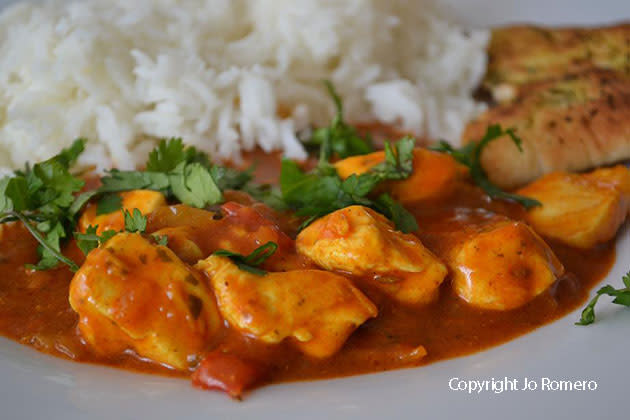Expert tips for making the perfect curry
An estimated 23 million of us tuck into a curry at least once a month. And if you're a curry fan, you don't need to rely on pre-packed jars and ready-meals. To mark National Curry Week next week (8-14th October), we asked three experts to reveal their secrets for making the perfect curry at home.
Stir in garam masala towards the end of cooking
While some spices are best added to the pan at the start of cooking, there are benefits to stirring garam masala in at the end. We asked The Ambrette's Michelin-rated chef Dev Biswal. "Generally, it's better to add garam masala at the end of the cooking process, as it works on an aromatic level, raising the whole nature of the dish," he told us. Stir a little into your dish just before you serve it to release all those fresh, vibrant aromas.
Use natural thickeners for a silky texture
Sometimes, a home-made curry doesn't have the thick, silky sauce you often get in restaurants. Indian chef and food writer Maunika Gowardhan suggests stirring in natural thickeners to give your dish the right texture. "Tomato purée, coconut milk/cream and yoghurt all work as perfect thickening agents for a curry", she told us. Some recipes also call for ground nuts, such as almonds or peanuts which thicken the sauce and add sweetness.
[Related article: Indian chef creates the curry that make you fall asleep]
Fry whole spices in oil first
As well as stocking up on ground spices, Maunika recommends using whole spices to make your curry really stand out. "Frying whole spices in oil allows for an even amount of flavour to the overall dish. Make sure to fry the spices for 1-2 minutes before adding the rest of your ingredients." Whole spices often used in Indian curries include cardamom pods, black peppercorns, cloves and cinnamon.
Take your time
According to Andy Laurillard, Managing Director of The Giggling Squid Thai restaurant chain, the secret to a flavourful, authentic curry is to cook it slowly. He recommends grinding spices such as dried and fresh chilli, galangal, lemongrass, shallots, garlic, shrimp paste and lime leaves and then stewing them in vegetable oil over a gentle heat, before adding any coconut milk or meat. "After a long time, all the aroma and flavours and oils from the herbs release and infuse into the vegetable oil. The chilli colour, too," he says. Anjum Anand, in her book I Love Curry, also recommends cooking curries slowly so that the flavours can "fully develop."
Grind your own spices
Chuck out that jar of garam masala that's been in the cupboard for months and grind up your own spice blends instead. Ground spices quickly become stale and lose their fresh, aromatic flavour. "For best results, I recommend home cooks grind their own spices in relatively small quantities and keep them in airtight containers for use within a few days or weeks," Dev Biswal says. "The difference between freshly ground and stale spice is noticeable." You can buy small, electric grinders to whizz whole spices into a powder, or use a pestle and mortar.
[Related article: Aubergine fritters with chilli and coriander chutney recipe]
Use flavoured oil for a finishing touch
Maunika suggests a great way of giving your curry that extra special touch. "Top with a basic tadka — heat oil and add cumin seeds and whole chillies, letting them sizzle in the oil." She suggests pouring this flavoured oil over the finished curry just before serving, "for that wow factor." Other toppings you can sprinkle over your curry include fried, sliced onions or chilli slices, fried until golden. Freshly chopped coriander leaves will also add fragrance to a curry, scattered over just before serving.
Try different accompaniments
When all the cooking is done and the time comes to serve your curry, don't automatically reach just for the rice. Maunika explained that pickles, chutneys and papads (poppadoms) add variety and make the meal "more celebratory." For many curries, breads are the traditional accompaniment and not rice. Try naan, bhatura, roti and paratha — and there are lots of side dishes to choose from too. Serve lentil-based dhals, cooling raitas and spiced vegetables — and if you're serving up an East Asian-inspired feast, consider sides such as spicy kimchi, salads and spicy prawn crackers.
What are your tips for the perfect home-made curry? Which curries are your favourites?


